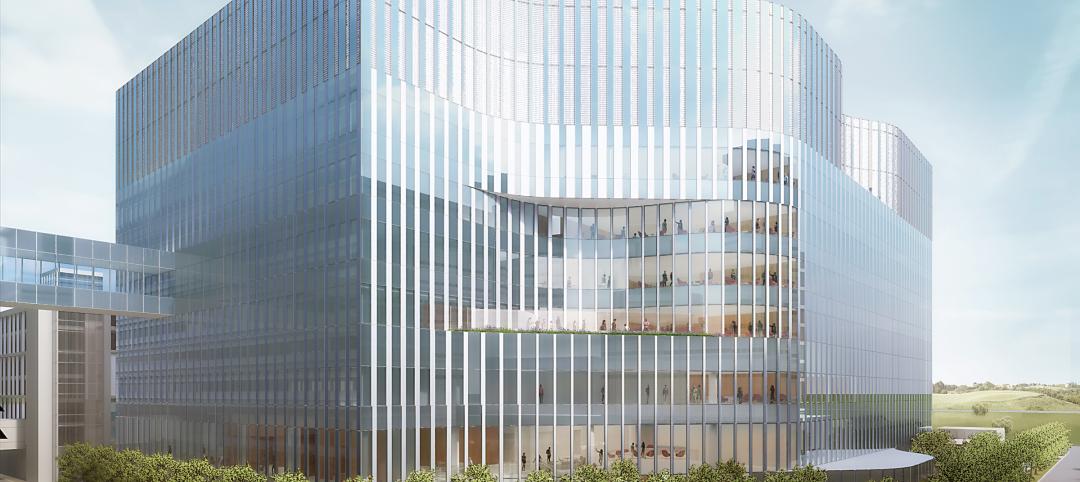Why do some building projects run like clockwork, while others seem to go on and on, encumbered by delays, additional costs, and infighting? The owner has ultimate responsibility for a project’s success, and the difference is in the way they manage the process. Knowing the key players, their roles, and how each is a benefit to you helps everyone achieve success on a project. Here are seven precepts to follow when considering your relationship to others and how it can impact the growth and completion of your next project.
1. Active Owner Management is Essential
Successfully completing a capital project takes more than hiring a good architect and a good contractor. Both are essential, but no project can succeed without the active guidance and participation of the building owner at every step of the process. Owners who are accustomed to undertaking significant improvement projects—say $5M and up in construction cost—understand this, and have knowledgeable staff and consultants dedicated to the project from day one.
It is often a full-time job for a coordinator within the owner’s ranks, who will follow the project, manage information and direction on behalf of the organization, liaise with the project team, and report problems back to management. For major projects, organizations often hire outside project management consultants to advise them and take on some of the generic management tasks. However, these consultants should never be considered a replacement for active, in-house owner involvement.
2. Understand Who Does What
Hiring a team of qualified professionals to design and construct the project is a baseline requirement. However, before anyone is brought on board, owners should educate themselves about the typical roles and interplay between the core project team members, and who is responsible for what. This is key to understanding the process, holding team members accountable, maintaining harmony across the project team, and building trust (or, conversely, to identifying bad apples).
Under the traditional design-bid-build project delivery model, there is a clear distinction in responsibilities between the design and construction phases of the project. The architect leads the project during the design phase and is responsible for laying out the necessary steps to gather initial information, develop the design, and obtain design approval from the owner and regulatory authorities.
The resulting design documents describe the project in sufficient detail to convey its general scope and design intent. The contractor leads the process from that point forward and is responsible for assembling the construction team and managing their efforts to complete the project within the agreed-upon time and budget. The design team remains involved to verify that the contractor’s interpretation of the design documents is consistent with the design intent, and to address changes and field issues as they arise.
Standard AIA contracts can be referenced for more detail regarding the typical responsibilities of the owner, architect, and contractor under a variety of project delivery methods. Of course, the contracts executed for the project will ultimately define those responsibilities.
3. Be Clear About Purposes and Programming
Collaborators need an owner’s input in order to design and build a project that meets their needs. If owners clearly define their objectives at each stage of the process, the project can proceed efficiently, with less room for misunderstandings. This sometimes involves resolving differences of opinion within the owner’s own camp before it’s possible to provide direction to the project team.
This clarity is particularly important at the onset of the project, before an owner’s needs are manifested in the design. Architects need to know what you are looking to achieve in the project before they can begin design. This could range from simply stating a broad objective, such as expanding the building to accommodate a new program, or it might be a more developed brief describing the size of the project, qualitative objectives, number and types of rooms, budget, and anticipated schedule. The greater degree of definition in the latter case reflects the work done to get to that point, which informs the work going forward.
As the design progresses, and on into construction, a myriad of new information will come to light requiring the owner’s evaluation. Who will make those decisions? Owners need to work out their in-house decision-making hierarchy so that answers can be rendered efficiently and succinctly. Ideally, the owner would identify a primary point of contact responsible for coordinating responses, through which all owner decisions would flow.
4. Insist on a Roadmap
Designing and constructing a building project involves orchestrating many interrelated, overlapping processes. Doing it efficiently requires identifying the critical path, which is the sequence of specific tasks, each one dependent on the previous, that defines the length of the project. Following a detailed project schedule is the only way to complete a project on time and within budget.
The owner should insist that their architect and contractor create, maintain, and share a detailed project schedule throughout the design and construction phases, respectively. A well-developed schedule provides insight to the project team as to upcoming tasks, facilitating a coordinated effort, and as such it should be reviewed regularly with the project team. The schedule is dynamic and must be maintained as circumstances change to remain a relevant and useful tool.
5. Recognize Unsung Partners
Every project involves working with external entities who have an interest in the project, each with their unique motivations and leverage over the building’s success. To avoid project delays, their needs must be anticipated and met in a timely fashion. These parties include:
- Abutting owners. Abutting property owners are often impacted by construction projects, particularly in urban environments. The design of the building may impact their light, views, and privacy, and its construction will likely have adverse, if temporary, effects on their quality of life. Reaching out to them early to discuss the project is the neighborly thing to do, but if you need access over their property for any project-related reason, then it is critical. Such access is required when new construction abuts a neighboring property line for installing fencing, protection, and finishes facing their property. In New York City, neighboring owners cannot unreasonably deny access for such purposes; however, access agreements often need to be negotiated specifying the conditions of access and any associated compensation for loss of beneficial use of their property. These negotiations can take months and, if not properly planned and budgeted for, can delay the project.
- Local community members. If the project requires a variance or other discretionary review, the community’s opinion can have a large influence on the outcome. Community engagement is typically required during the design stages of such projects as part of the municipality’s approval process. Design changes in response to community feedback are often required to gain the community board’s approval. Savvy owners will conduct outreach to community groups in advance of community board hearings and make adjustments to the design so it satisfies community concerns going in.
- Government agencies. It is critical to understand the requirements and protocols of the government agencies that have jurisdiction over the project, as they will inevitably have an influence over the project schedule and budget. Projects of any significant size require permits from the local building official before construction can begin. Before permits can be issued, the architect must first gain approval of the design from the municipality by demonstrating that it complies with zoning laws, the building code, and other applicable regulations. Inspections and reporting are required at appropriate stages during construction, which must be tracked as the work progresses to ensure all requirements are met. A final accounting of the design, all required inspections, and agency signoffs are required before the project can be closed out at the building department.
6. Stay Involved
Some owners fall into the trap of thinking that because they hired an architect, contractor, and management consultant to run the project for them, they have their bases covered. Indeed, trust between the parties is a very important factor in successful projects; however, none of those team members has the same motivation or resoluteness to complete the project as the owner does. Ultimately, the owner sets the tone and chemistry among the project team members, and acts as referee when conflicts inevitably arise.
Successful owners educate themselves about the process and proactively manage the flow of information and the responsibilities of the respective parties, to mitigate problems. Owners who remain detached and delegate key responsibilities wholly to others can expect to be refereeing bigger, more complicated conflicts that have the potential to delay or derail their project.
The process of designing and constructing a building project is dynamic, with a variety of factors influencing its trajectory over time. Smart owners know the importance of remaining engaged and driving the process to achieve the best result.
About the author
James D. Seger, AIA, LEED AP, is Partner with PBDW Architects. He has been practicing architecture for over 25 years. His expertise covers a wide range of projects, from large-scale office towers to modest institutional buildings. Seger joined PBDW Architects in 1998. He has been in charge of a number of notable projects, including the adaptive reuse of a Landmark townhouse as a lower school building for the Spence School, a new 11-story residential building on 110th Street and Broadway, and feasibility and planning studies for the National Academy of Design, Central Synagogue, and Equinox. Seger received a Bachelor of Architecture from Mississippi State University.
Related Stories
MFPRO+ News | Nov 21, 2023
Underused strip malls offer great potential for conversions to residential use
Replacing moribund strip malls with multifamily housing could make a notable dent in the housing shortage and revitalize under-used properties across the country, according to a report from housing nonprofit Enterprise Community Partners.
Retail Centers | Nov 15, 2023
Should retail developers avoid high crime areas?
For retailers resolute to operating in high crime areas, design elements exist to mitigate losses and potentially deter criminal behavior.
MFPRO+ News | Nov 15, 2023
Average U.S multifamily rents drop $3 to $1,718 in October 2023: Yardi Matrix
Multifamily fundamentals continued to soften and impact rents last month, according to the latest Yardi Matrix National Multifamily Report. The average U.S. asking rent dropped $3 to $1,718 in October, with year-over-year growth moderating to 0.4%, down 40 basis points from September. Occupancy slid to 94.9%, marking the first decline in four months.
MFPRO+ Special Reports | Nov 14, 2023
Register today! Key trends in the multifamily housing market for 2024 - BD+C Live Webinar
Join the BD+C and Multifamily Pro+ editorial team for this live webinar on key trends and innovations in the $110 billion U.S. multifamily housing market. A trio of multifamily design and construction experts will present their latest projects, trends, innovations, and data/research on the three primary multifamily sub-sectors: rental housing, senior living, and student housing.
Data Centers | Nov 13, 2023
Data center sector trends for 2023-2024
Demand for more data centers is soaring, but delivery can be stymied by supply delays, manpower shortages, and NIMBYism.
Education Facilities | Nov 9, 2023
Oakland schools’ central kitchen cooks up lessons along with 30,000 meals daily
CAW Architects recently completed a facility for the Oakland, Calif., school district that feeds students and teaches them how to grow, harvest, and cook produce grown onsite. The production kitchen at the Unified School District Central Kitchen, Instructional Farm, and Education Center, (“The Center”) prepares and distributes about 30,000 meals a day for district schools lacking their own kitchens.
Laboratories | Nov 8, 2023
Boston’s FORUM building to support cutting-edge life sciences research and development
Global real estate companies Lendlease and Ivanhoé Cambridge recently announced the topping-out of FORUM, a nine-story, 350,000-sf life science building in Boston. Located in Boston Landing, a 15-acre mixed-use community, the $545 million project will achieve operational net zero carbon upon completion in 2024.
Retail Centers | Nov 7, 2023
Omnichannel experiences, mixed-use development among top retail design trends for 2023-2024
Retailer survival continues to hinge on retail design trends like blending online and in-person shopping and mixing retail with other building types, such as offices and residential.
Healthcare Facilities | Nov 3, 2023
The University of Chicago Medicine is building its city’s first freestanding cancer center with inpatient and outpatient services
The University of Chicago Medicine (UChicago Medicine) is building Chicago’s first freestanding cancer center with inpatient and outpatient services. Aiming to bridge longstanding health disparities on Chicago’s South Side, the $815 million project will consolidate care and about 200 team members currently spread across at least five buildings. The new facility, which broke ground in September, is expected to open to patients in spring 2027.
Office Buildings | Nov 2, 2023
Amazon’s second headquarters completes its first buildings: a pair of 22-story towers
Amazon has completed construction of the first two buildings of its second headquarters, located in Arlington, Va. The all-electric structures, featuring low carbon concrete and mass timber, help further the company’s commitment to achieving net zero carbon emissions by 2040 and 100% renewable energy consumption by 2030. Designed by ZGF Architects, the two 22-story buildings are on track to become the largest LEED v4 Platinum buildings in the U.S.

















